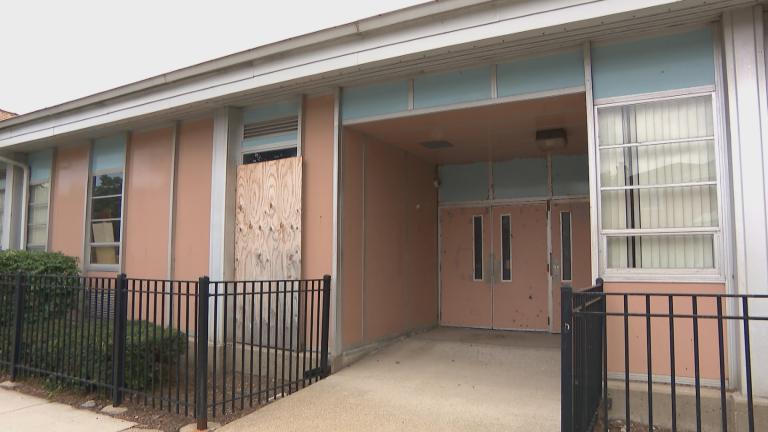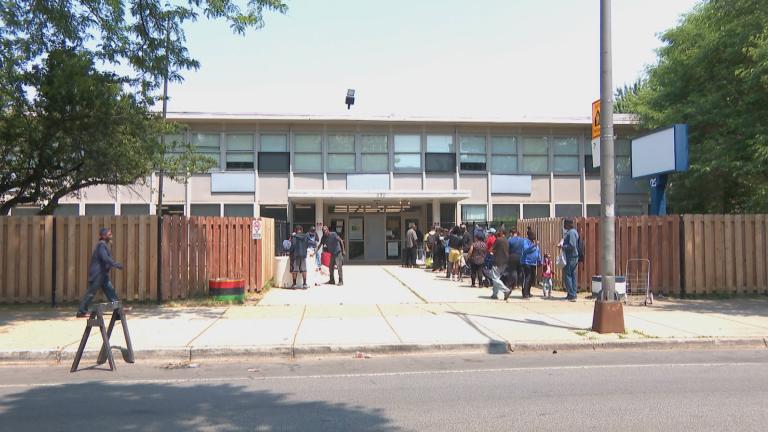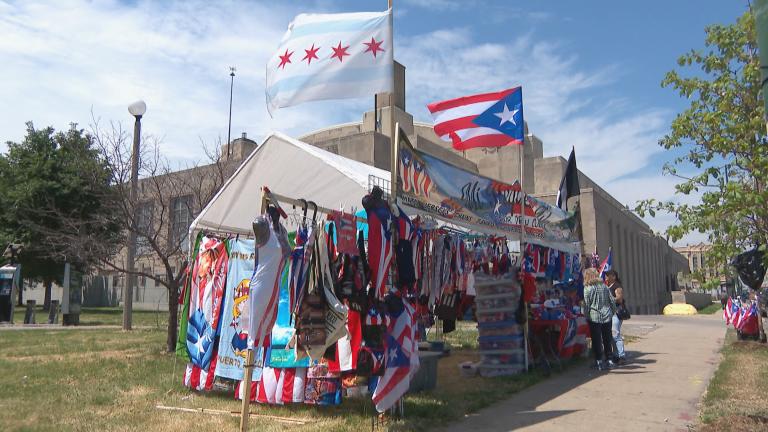If the walls inside the Rosenwald Courts Apartments could talk, they might tell the histories of some of Bronzeville’s greatest former residents: Gwendolyn Brooks, Quincy Jones and John H. Johnson, just to name a few.
The massive block-long building opened in 1929 to provide modern housing for African Americans moving to Chicago during the great migration.
“Lorraine Hansberry — it’s said she wrote ‘A Raisin in the Sun’ here,” said Wateka Kleinpeter, a lifelong Bronzeville resident.
But another part of the building’s history is its disrepair and eventual abandonment by 2000.
“At one time,” Kleinpeter said, “the building had a bad reputation, and it ended up being closed. But they didn’t want to tear it down.”
Interactive map: More from our community reporting series
Kleinpeter has lived in the newer, remodeled Rosenwald Courts for the last seven years. It was reopened in 2016 after a massive redevelopment and preservation effort.
The building is just one of at least 20 that tell the history of Bronzeville, a welcoming center to Black people fleeing racism in the South and a mecca for Black business and artistry.
It’s a history that some say is finally being recognized and preserved.
“When we began this journey, they told us it’d be a marathon and not a sprint — and that’s exactly what it has been,” said Paula Robinson, president of the Bronzeville-Black Metropolis National Heritage Area.
Now, she said long-running efforts to preserve the community have finally come to fruition.
In late December, President Joe Biden signed the National Heritage Act, establishing the Bronzeville-Black Metropolis National Heritage Area. The designation means up to $1 million per year for the next 15 years.
Now, local preservationists are tasked with developing a management plan to properly preserve sites and prepare them for tourists.
“I’m talking about international tourism,” said Bernard Turner, executive director of the Bronzeville-Black Metropolis National Heritage Area. “People come here for the gospel music; people come here for the blues, the jazz. They come here to see the architecture. They come here for the stories.”
Future visitors will have plenty to explore, with more than 20 sites included in the plan — ranging from the Muddy Waters Home to the Ida B. Wells monument and the Bee Branch of the Chicago Public Library.
The area being designated is significant in size, too — stretching from 18th Street down to 71st Street.
Robinson hopes reflecting on this past can provide lessons for innovation.
“We have people here who were innovators — who did the first open heart surgery, who created franchises like the Negro League,” Robinson said. “So necessity forced them to innovate. We’re keen on building on that same sense of necessity and innovation because we found we need it again now.”
Among Bronzeville’s innovators of today is artist Frances Guichard, who works under the name Marlene Campbell, to tell the stories of history. One example is a piece titled “The Great Migration: The Ancestors.”
“It’s usually all about the ancestors who taught us to be more socially, economically and environmentally responsible,” Guichard said, “so we’ll have something to leave to the next generation.”
She and her husband, Andre Guichard, run Gallery Guichard and are residents at the Bronzeville Artist Lofts, one of the sites included in the heritage area, whose walls have their own stories to tell.
“The Bronzeville Artist Lofts actually used to be the Ben Franklin store: the first African American department store in the country owned by the Jones brothers, who were policy kings in Bronzeville,” Andre Guichard said. “And their policy was so grand it became the Illinois lottery.”
That rich history goes beyond the lofts. It’s all throughout the community.
“You can’t walk down anywhere in Bronzeville without gleaning some history that was amazing throughout our culture,” Frances Guichard said.
One Bronzeville group is trying to get recognition for another local legend: cyclist Marshall “Mayor” Taylor.
John Adams, founder of the Bronzeville Trail Task Force, who is pushing for the recognition, said Taylor was the first African American to win an international sports championship in any sport — Montreal in 1899. Taylor was born in Indiana, but lived in Bronzeville for part of his life.
In an ode to Taylor, the task force is seeking to redevelop the abandoned Kenwood “L” Line into a walking, running and biking trail — and that line holds a history in itself.
“The line is the remnants of the historic stockyard line and it was elevated to an embankment back in 1907 or so,” Adams said.
“Chicago Tonight” is expanding its community reporting. We’re hitting the streets to speak with your neighbors, local businesses, agencies and leaders about COVID-19, the economy, racial justice, education and more. See where we’ve been and what we’ve learned by using the map below. Or select a community using the drop-down menu. Points in red represent our series COVID-19 Across Chicago; blue marks our series “Chicago Tonight” in Your Neighborhood.Community Reporting Series








